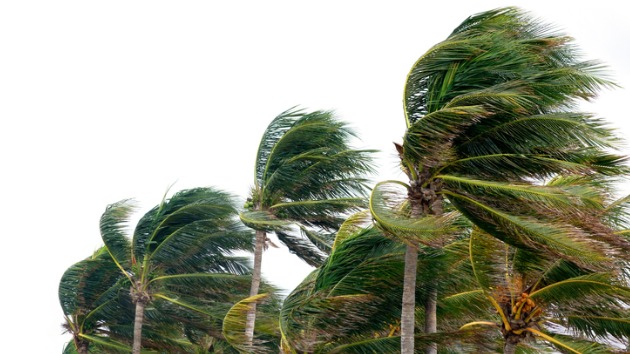From the Atlantic hurricane season to wildfires in the West: How 2020 weather shattered records
Imagedepotpro/iStockBy EMILY SHAPIRO and DANIEL MANZO, ABC News
(NEW YORK) — This year became one for the record books for yet another reason: The turbulent weather of 2020 smashed numerous records, from storms to wildfires to heat waves.
Record-breaking hurricane season ‘in every sense of the word’
This year was the fifth year in a row that the Atlantic hurricane season was an above-normal active season, and 2020 is now in the record books as “the most active hurricane season on record” in the Atlantic, said Jason Smerdon, a climate scientist at Columbia University’s Lamont-Doherty Earth Observatory.
The 2020 Atlantic hurricane season — which ran from June to November — had 30 named storms, the most in recorded history, beating a record previously held by the 2005 Atlantic hurricane season. The very active 2005 season, which included Hurricane Katrina, had 28 named storms in the Atlantic basin.
This year was also only the second time that the Greek alphabet was used to name storms after running through the full English alphabet.
Twelve named storms made landfall in the continental U.S. this season, beating the record from 1916 when nine storms made landfall.
Six of those storms that made landfall were designated as hurricanes, which is double what’s normal for one season. This year ties 1886 and 1985 for most hurricane landfalls in a single season.
Louisiana was hit particularly hard this year with five named storms making landfall, marking a record for Louisiana and for any state.
After Hurricane Iota — the strongest hurricane to hit Nicaragua in November — struck, Clare Nullis, spokesperson for the World Meteorological Organization, said at a UN news briefing in Geneva, “We’re running out of superlatives for this Atlantic hurricane season.”
“It’s record-breaking in every sense of the word,” she said.
Global warming is thought to be making hurricanes more powerful, because the hurricanes are “happening over warmer and warmer sea surface temperatures,” and it’s that warm water that “fuels hurricanes,” Smerdon said.
A warmer atmosphere also holds more moisture, so hurricanes are dumping more rain, he added, which makes storms more dangerous by intensifying flooding and storm surge.
“The sea surface temperature warming is also increasing the range of where hurricanes can form, which can influence things like the likelihood of landfall … expanding north in the northern Atlantic, for instance,” Smerdon said.
While global warming has a major impact, Smerdon said that overall, “the role of climate change in the number of hurricanes is not particularly well-resolved… It’s generally demonstrated that climate change may reduce hurricane activity slightly, but it will increase the number of large storms.”
Wildfires explode out West
2020 also marks the most active wildfire year on record for the western U.S., according to experts.
Three of the four largest fires in Colorado history erupted this year. The biggest was the Cameron Peak fire, which, fueled by winds and dry conditions, burned for 112 days until it was declared 100% contained in the beginning of December, The Colorado Springs Gazette reported.
In California, out of the six biggest wildfires in state history, five occurred in 2020, according to the California Department of Forestry and Fire Protection.
By September 2020, California had reached the highest number of acres burned in a single year.
California’s massive fire activity can be linked to the Southwest drought that’s been ongoing for roughly two decades, according to Smerdon and Daniel Swain, a climate scientist at UCLA.
“The summer itself was one of the driest and hottest on record in a lot of the interior West,” Swain said. “The monsoon, which would normally bring summertime thunderstorms, was essentially a no-show this year. There was almost no precipitation in those interior states.”
The record warmth in the interior desert expanded to California and Colorado, Swain said, and when a lightning outbreak hit California in the late summer, “that’s when things really exploded out West.”
“We had this very unusual, even historically unprecedented, volume of dry lightning strikes in coastal California in August immediately following some all-time record heat,” Swain said. “That started a lot of fires — hundreds, if not thousands.”
Then “things got progressively worse and worse” in California and Colorado, Swain said.
Fires that began in the peak of summer lasted through the fall, fueled by very dry vegetation, record heat and, in some cases, lack of rain and extreme winds, Swain said.
Although California had briefly emerged from the longstanding Southwest drought a few years ago, the severe drought returned during 2020, Swain said, and conditions are now worsening. Recent evidence suggests the drought is driven by the rise in temperature in the West, Swain said.
Hottest year on record?
Speaking of temperature rise, 2020 brought “record-shattering warmth” to a lot of the Southwest, Swain said, with this August, September and October becoming the hottest months on record in California.
All of the lower 48 states had above-average temperatures this year, he said.
Across the globe, this January and September marked the warmest January and September on record, according to the National Oceanic and Atmospheric Administration (NOAA).
Smerdon said 2020 will likely rank in the top three hottest years ever. Swain said “there’s a very good chance” 2020 will become the hottest year on record — a title currently held by 2016.
2020 as potentially the hottest year ever is “absolutely stunning,” Swain said, because of the strong La Niña event currently in the Pacific Ocean.
A strong La Niña “unearths a bunch of cold water temporarily in the Pacific Ocean, which typically would result in some of the coolest years on record,” Swain said. “And yet this year, that cooling effect in the Tropical Pacific apparently isn’t even enough to offset the all-time record warmth in so many other places on Earth.”
Swain cited climate change as a major reason behind the record warmth, and according to Smerdon, next year we should expect even more records.
“We are on this escalator of global temperatures increasing, and the fact that we’re seeing these records is not surprising as we continue this upward march,” Smerdon said. “When you consider the fact that the direction we’re clearly going — because there is a rock-solid connection between increases in greenhouse gases and increases in global temperatures — we’re on this continued path of warming, and all of the fallout from that warming is going to be something that’s part of our new normal.”
He offered a new perspective to look at the rising temperature records: “The years we’re experiencing now aren’t just the warmest years on record into the past, they’re going to be some of the coolest years on record going into the 21st century.”
Deadly tornadoes and a ‘once-in-a-decade occurrence’
The interior U.S. wasn’t immune to destructive weather either.
April brought the deadliest tornado outbreak since 2014, when at least 140 tornadoes touched down from Texas to Maryland.
Tennessee was especially hard-hit by tornadoes this year. As of September, 35 tornadoes had torn through the state, including Nashville, in 2020 — the most in any year since 2013, according to the National Weather Service.
The “very active and devastating” tornado year for Tennessee killed 28 people and injured hundreds more, the NWS said.
And in August, a powerful line of intense thunderstorms known as a derecho devastated Iowa and Illinois.
With wind gusts up to 140 mph, the derecho unleashed two tornadoes, led to four fatalities and left widespread destruction and power outages in its wake.
The NWS said a “derecho of this intensity is a roughly once-in-a-decade occurrence” for the area.
This derecho was even more rare due to the length of the powerful winds, which lasted 30 to 60 minutes instead of the usual 10 to 20 minutes, the NWS said.
This intense year of U.S. weather has left a staggering economic toll. As of early October, there were 16 weather events in 2020 where losses exceeded $1 billion each — tying the record for billion-dollar weather disasters from 2011 and 2017, according to the NOAA.
Copyright © 2020, ABC Audio. All rights reserved.

